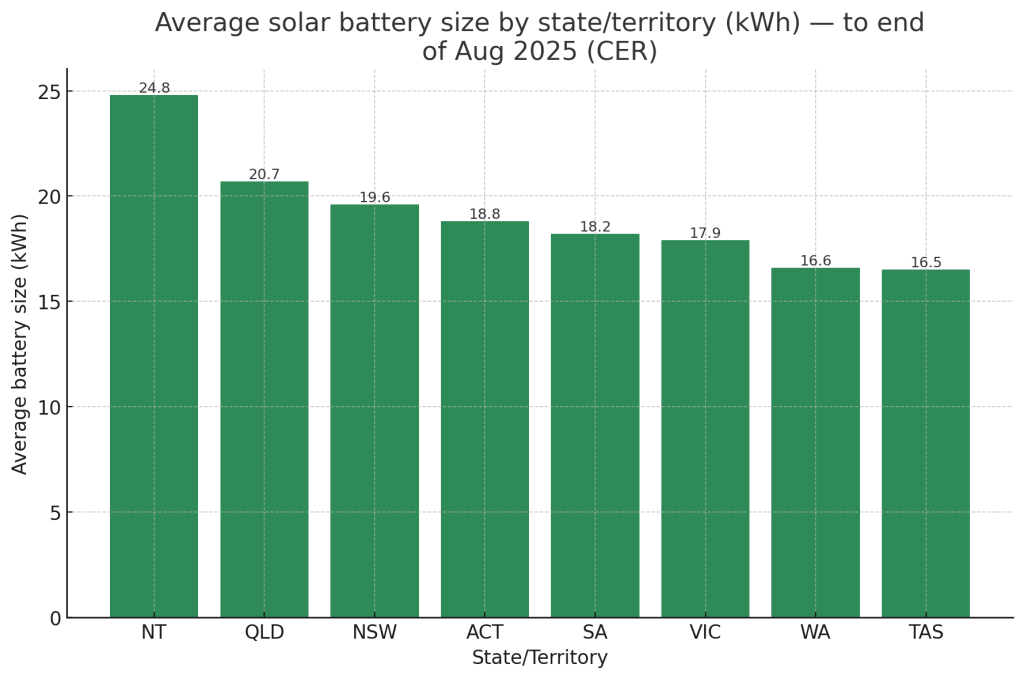 RE-ENERGY off-grid solar system Ballarat
RE-ENERGY off-grid solar system Ballarat 
Thinking about a home battery in Ballarat? You’re not the only one. The Clean Energy Regulator (CER) just reported another jump in installs, and systems are trending bigger—enough to make a real dent in night-time use and provide better backup.
The quick take
- 43,517 batteries have been installed with new or existing rooftop solar since 1 July 2025, when batteries became eligible under the Small-scale Renewable Energy Scheme (SRES). That’s 23,925 more than the CER’s July update.
- The average battery is ~19.0 kWh, with about ~825 MWh of storage added nationally.
- These figures include approved and pending STC applications (they exclude failed applications or systems that haven’t applied yet).
- Context: batteries became SRES-eligible on 1 July 2025 after regulation changes.
Why the surge?
From 1 July 2025, households and businesses can get a significant up-front discount (around 30%) on eligible batteries installed with new or existing solar, via STCs under the SRES. Early numbers show that change has driven strong uptake.
What size are people choosing?
The national average is about 19 kWh. In everyday terms, that’s close to the lower end many homes target for basic overnight autonomy. Going fully off-grid usually needs more storage and enough PV to handle winter and multi-day cloudy runs—but the average size people are now putting in is getting near that ballpark.
State snapshots (to end of Aug 2025)
- NSW: 15,418 (avg 19.6 kWh)
- QLD: 8,572 (20.7 kWh)
- SA: 6,415 (18.2 kWh)
- VIC: 6,945 (17.9 kWh)
- WA: 4,577 (16.6 kWh)
- ACT: 865 (18.8 kWh)
- TAS: 580 (16.5 kWh)
- NT: 145 (24.8 kWh)
Note for locals: the CER update doesn’t break out Ballarat specifically, and it doesn’t say how many installs were with brand-new solar vs existing solar, or on-grid vs off-grid systems.
Bottom line for Ballarat
Batteries are moving from “nice idea” to practically useful. With an average around 19 kWh, many homes are edging toward reliable night-time coverage. If you’re aiming for off-grid, plan for winter: bigger storage, enough PV to recharge, and a strategy for long cloudy spells.
Source: Clean Energy Regulator


